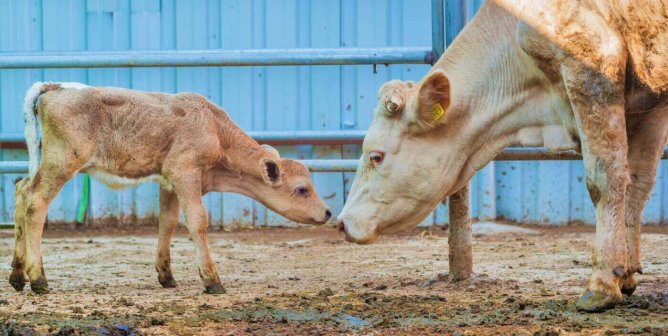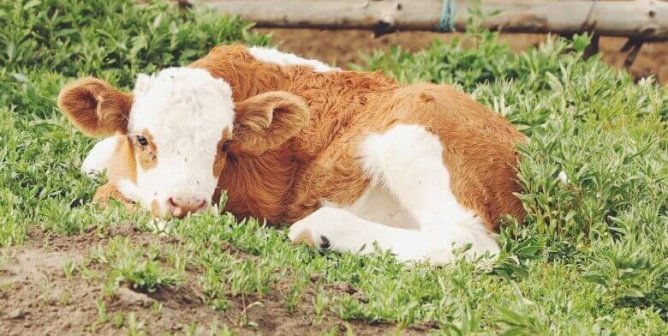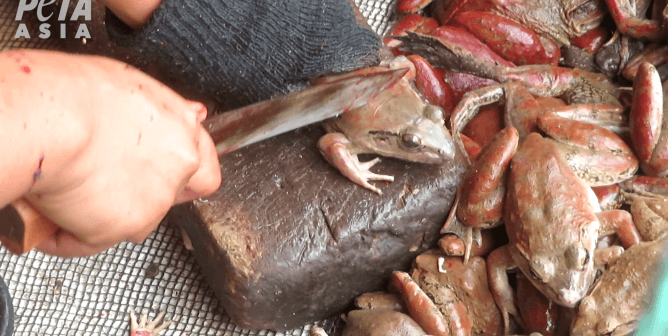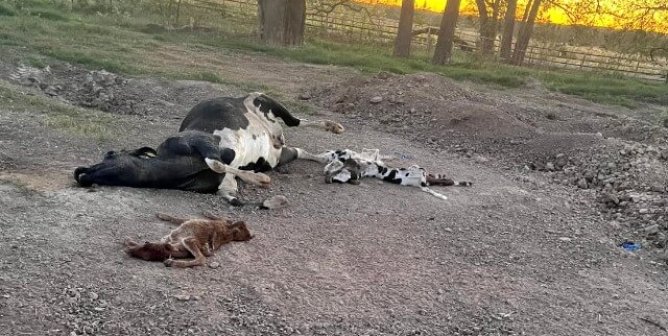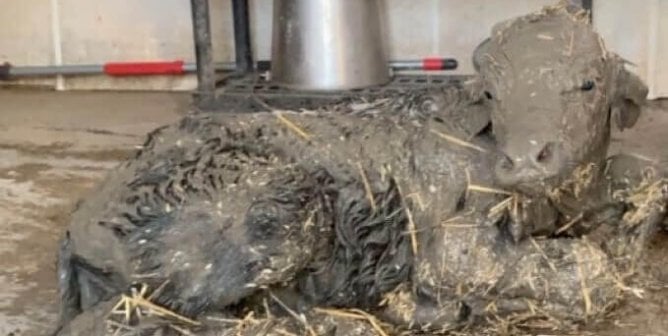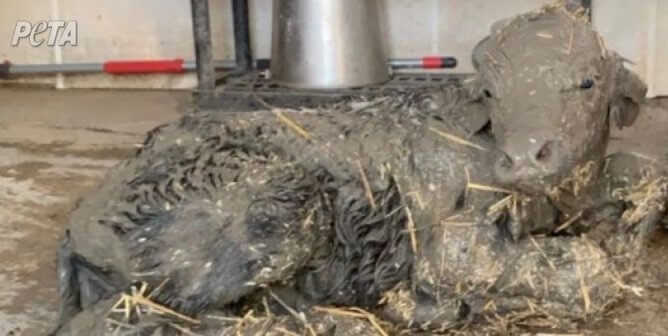Veal: A Byproduct of the Cruel Dairy Industry
Cows produce milk for the same reason why humans and other mammals do: to nourish their young. But the millions of cows who live on U.S. dairy farms are forced into a vicious cycle of continuous pregnancy so that they will produce milk for human consumption. Their female calves are slaughtered immediately or used to replace their mothers in the dairy herd, and many male calves end up in veal crates―a fate characterized by confinement, darkness, malnutrition, and slaughter.
The Cow-Calf Bond
Without human intervention, calves suckle from their mothers for nearly a year.1 One veterinary study revealed that “during natural weaning there is never complete and abrupt abandonment of the calf by the cow. In fact, the … cow and calf will maintain a lifelong relationship of social contact and companionship even when a new offspring arrives.”2 Another study found that a cow and her calf can develop a “strong maternal bond” in as little as five minutes.3 But calves born on dairy farms are taken from their mothers on the same day that they are born and fed milk replacers, including cattle blood, so that humans can have the milk instead.4,5 This forced separation causes cows and calves great distress, and cows have been known to escape enclosures and travel for miles to reunite with their young.
Small Stalls and No Exercise
Calves raised for veal are forced to spend their short lives in individual crates that are no more than six by seven feet.6 These crates are designed to prohibit exercise and normal muscle growth in order to produce tender “gourmet” veal. The calves are fed a milk substitute that is purposely low in iron so that they will become anemic and their flesh will stay pale.7
Because of these extremely unhealthy living conditions, calves raised for veal are susceptible to a long list of diseases, including chronic pneumonia and diarrhea. A study published in the Journal of Animal Science found that calves who were kept in “smaller housing units” had difficulty keeping themselves clean and had trouble “extending their front legs and changing from a lying to a standing position,” which resulted in joint swelling. It was also determined that stereotypical forms of stress behaviors, such as tongue rolling and “sham-chewing” (the act of chewing without food in the mouth), increase when smaller pens were used and as calves got older.8
What You Can Do
Veal crates have been prohibited in European Union member countries since 2007.9 Ask your state legislators to follow the example of states like Arizona, California and Ohio, which have banned veal crates, by sponsoring bills that would prohibit them.
In addition to refusing to eat veal, avoid all dairy products—calves raised for veal are a “coproduct” of the dairy industry. Try fortified soy, almond, oat, and rice milks, all of which provide calcium, vitamins, iron, zinc, and protein but contain no cholesterol. They are perfect for cereal, soups, baked goods, and other recipes. Many delicious dairy alternatives—including Rice Dream, So Delicious, Purely Decadent, and Tofutti brand nondairy ice creams as well as nondairy cheeses, sour cream, and creamers—are available in health-food and grocery stores.
Veganism means eating for life—yours and animals’. Go to PETA.org for great recipes, nutritional information, cooking and shopping tips, and to order a free copy of PETA’s vegetarian/vegan starter kit.
References
1Danny Lewis, “New Way to Wean Calves Leaves Them Happier and Healthier,” Smithsonian.com, 25 Jan. 2016.
2Joseph M. Stookey and Derek B. Haley, “The Latest in Alternate Weaning Strategies,” Department of Large Animal Clinical Sciences, Western College of Veterinary Medicine, 2002.
3Marina A.G. von Keyserlingk, Daniel M. Weary, “Maternal Behavior in Cattle,” Hormones and Behavior, 52 (2007) 106–113.
4“Questions,” American Veal Association, 2016.
5American Veterinary Medical Association, “Literature Review on the Welfare Implications of the Veal Calf Husbandry,” 13 Oct. 2008.
6Saul Elbein, “Calves in Confinement,” The Intercept, 8 Oct. 2018.
7American Veterinary Medical Association.
8Tammy L. Terosky et al., “Effects of Individual Housing Design and Size on Special-Fed Holstein Veal Calf Growth Performance, Hematology, and Carcass Characteristics,” Journal of Animal Science 75 (1997): 1697-703.
9“Veal Production In The UK,” The Dairy Site, 18 May 2010.
